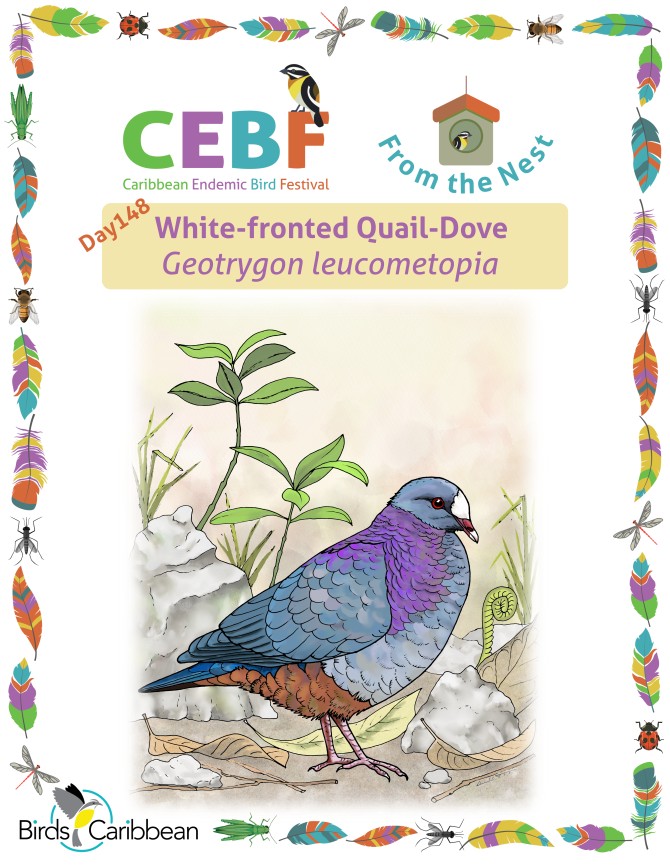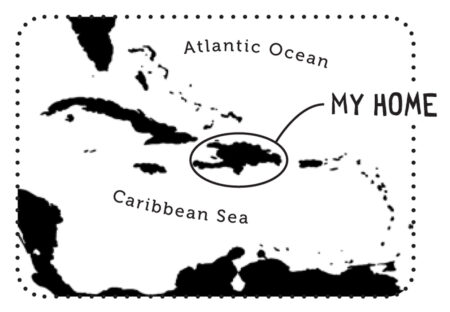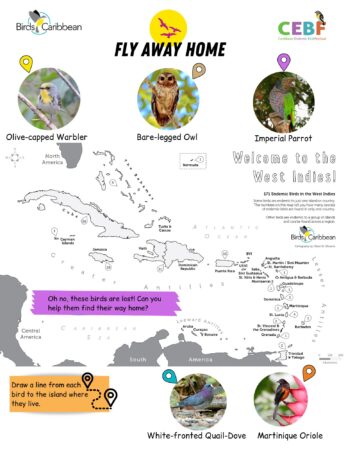Celebrate the Caribbean Endemic Bird Festival (CEBF) with us! Our theme in 2024 is “Protect Insects, Protect Birds”—highlighting the importance of protecting insects for birds and our environment. Have fun learning about a new endemic bird every day. We have colouring pages, puzzles, activities, and more. Download for free and enjoy learning about and celebrating nature!
Endemic Bird of the Day: White-fronted Quail-Dove
If you listen extra carefully while walking along remote, dense, humid forests on the central and southwest mountains of the Dominican Republic, you will hear a very hushed, low frequency “coo-o-o” call coming from the thick vegetation of the forest floor. So soft is this call that it can be quite hard to pinpoint where it’s coming from. But we can tell you who’s making that gentle sound—it’s the White-fronted Quail-Dove! This beautiful, plump, but also terribly shy bird, spends most of its time out of sight. Spotting this bird always presents a challenge to birdwatchers and nature photographers in the Dominican Republic where it is locally known as ‘azulona’! The White-fronted Quail-Dove belongs to the Columbidae family, which comprises doves and pigeons—including the bold ones you see around your homes and schools.
White-fronted Quail doves are medium-sized birds that measure 27-28 cm. The crown, nape, and sides of the head are slate gray; sides of the neck suffused with beautiful reddish purple or violet, sometimes extending onto the breast. Underparts are mostly gray, becoming rufous on the lower belly and under the tail. Its contrasting white forehead gives this dove its name and is a great field mark for identification. Its eyes are red and it has a reddish bill that is paler towards the tip. The legs are pink. Males and females look alike. Young birds are browner and lack the metallic sheen on the back and neck. This is the only quail-dove that lacks facial stripes.
The White-fronted Quail-Dove is endemic to Hispaniola, restricted to the isolated, dense, moist montane forests on Sierra de Bahoruco and the Central Mountains of the Dominican Republic. It likely can no longer be found in Haiti due to high levels of deforestation. It’s found at elevations from 745 to 1,685 m. This quail-dove has also been reported in shade grown coffee plantations. Little is known about its breeding ecology however, except that it lays 1-2 beige eggs on a nest of twigs and leaves placed low in the undergrowth.
This bird spends most of the time on the ground where it looks for seeds and small invertebrates to eat. The easiest way to try to observe this stunning quail-dove is when it ventures out of the dense forest to forage in a semi-open clearing or along a forest trail. While it is usually very shy and hard to spot, if you are in the right habitat, and are very patient, it can show itself very well.
The White-fronted Quail-Dove is classified as Endangered by the IUCN because it has a single, very small population of fewer than 2,500 individuals, which has suffered a continuing decline due to on-going fragmentation, loss of habitat, hunting pressure, and the effects of introduced predators like the mongoose and feral cats. Cats are prolific predators—even if you don’t see your cuddly, well-fed cat catching wildlife, they may still be hunting. Keeping your cats indoors can protect birds and other wildlife from being killed. Keeping cats indoors isn’t just great for wildlife, it’s good for the cats—it keeps them safe from being attacked, getting lost, or being poisoned.
Learn more about this species, including its range, photos, and calls here. Great news! If you’re in the Caribbean, thanks to BirdsCaribbean, you have free access to Birds of the World and you can find out even more in the full species account of this bird!
Thanks to Arnaldo Toledo for the illustration and Ivan Mota for the text!
Colour in the White-fronted Quail-Dove
Download our West Indies Endemic Bird colouring page. Use the photos below as your guide, or you can look up pictures of the bird online or in a bird field guide if you have one. Share your coloured-in page with us by posting it online and tagging us @BirdsCaribbean #CEBFfromthenest
Listen to the song of the White-fronted Quail-Dove
The song of White-fronted Quail-Dove is a repeated “oop-oop…”
Puzzle of the Day
Click on the image below to do the puzzle. You can make the puzzle as easy or as hard as you like – for example, 6, 8, or 12 pieces for young children, all the way up to 1,024 pieces for those that are up for a challenge!
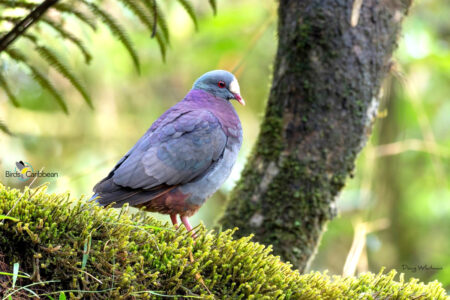
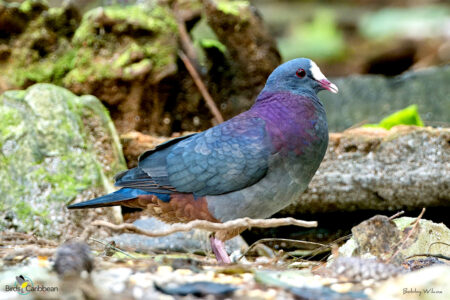
Activity of the Day
FOR KIDS : UPDATE Test your knowledge of where Caribbean endemic birds live with our ‘Fly away home’ Map Matching Activity!
Draw lines from the picture of each Caribbean endemic bird to match each one with its home. You can find out more about Caribbean endemic birds by reading our posts each day or you can go back and find all the endemic birds that we have featured in previous years here. You can also find out all about our Endemic Birds of the West Indies Colouring Book with even more birds to colour in!
Here is the Answer Key – don’t look until you have completed the activity!!!
FOR KIDS AND ADULTS : Enjoy this video of a White-fronted Quail-Dove in the wild!

